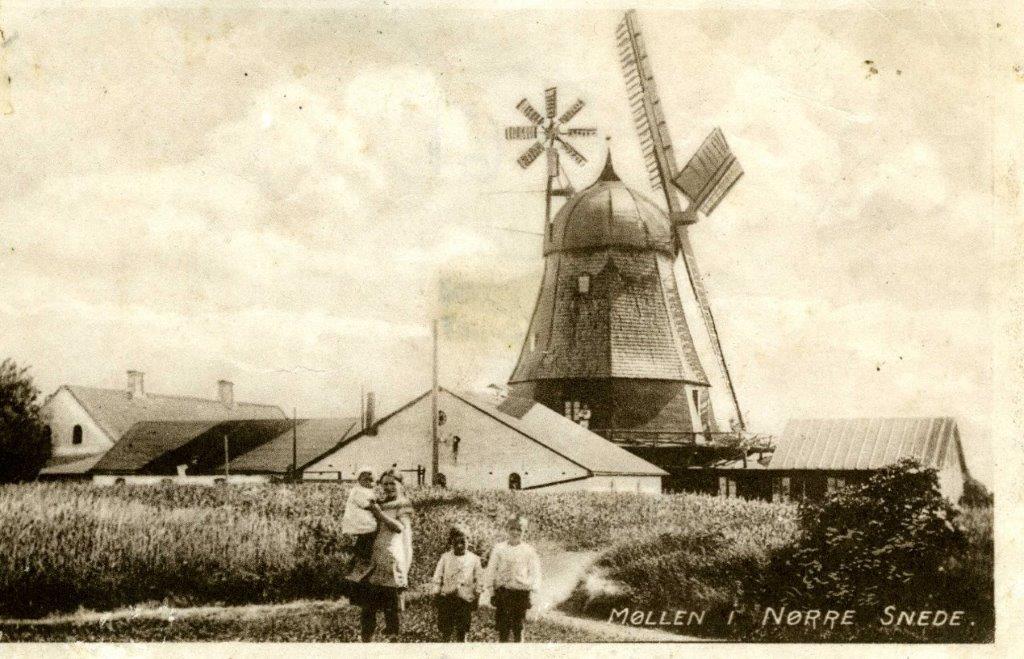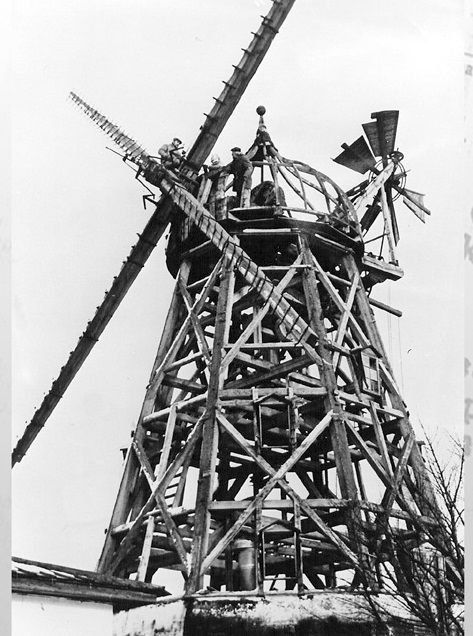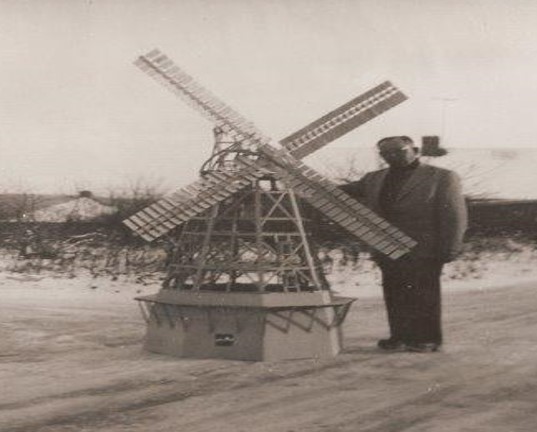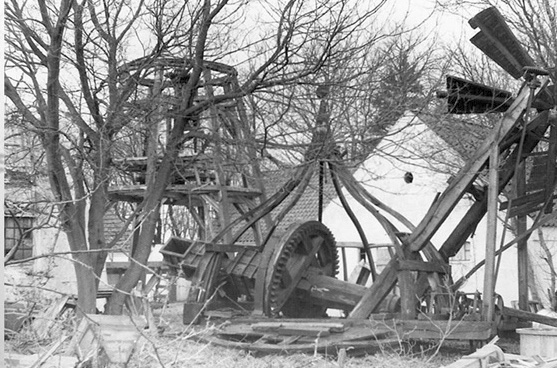The historic Danish Windmill is a working example of life in an earlier time when farmers brought their harvest to the mill and wind energy was used to grind grain into flour. It provides a rare glimpse into the past when thousands of windmills were scattered about the Denmark countryside.
How did a 60 foot tall Danish windmill end up on the Iowa prairie? And why?

It all started when Harvey Sornson, an area farmer of Danish descent, came back from a trip to Denmark in the spring of 1975. Harvey had an idea…an absolutely crazy idea.
Harvey had been fascinated since childhood by the stately old windmills that graced the countryside in Denmark. On his visit, Harvey learned that many of the old mills were in a state of disrepair and feared that his beloved windmills would deteriorate into nonexistence.
Harvey became obsessed with what his better judgment told him was a crazy idea, an absolutely crazy idea: He wanted to save an authentic windmill by moving it from Denmark to Elk Horn, the largest rural Danish settlement in the US.
When he returned home to Elk Horn, he presented his “crazy idea”. He proposed it would make a wonderful Bicentennial project for 1976. Its possible benefits as a tourist attraction were promising and it could serve as a catalyst to help a small rural community continue to thrive. But most of all it would be a way to honor the forefathers of Elk Horn and preserve a part of the area’s Danish heritage.
Harvey’s “impossible dream” caught on and within five months the people of Elk Horn had raised the necessary funds to purchase a 60-foot smock windmill that had been built in1848 in Nørre Snede, Denmark.

The old windmill had endured two World Wars, a massive fire and was about to make a trip across the Atlantic. No one would have thought in 1848 that this windmill would have such a story to tell.
None would have guessed that this mill would be swept up in one man’s impossible dream and one community’s amazing undertaking to make that dream a reality.
How the Mill was reconstructed in Elk Horn
It took a month to dismantle the Mill for its trip across the Atlantic. Each piece of the mill was numbered and a 10:1 scale model standing six feet high was built to correspond to the original mill. The model would be used to guide reassembling the mill.
There were several challenges in transporting the cargo from Århus, Denmark to the United States—the shipping company insisted on prepayment of the overland freight, US Customs demanded $2,000 before they allowed the mill to be moved, carriers refused to haul the mill to Iowa from New York because the 66-foot sails were too long for US highway travel. The only solution was to cut the two sails in half and build replacements. Finally, after 30 days on the dock and $680 in storage charges, the Mill was loaded on two huge trucks bound for its destination in the Midwest.
On February 4, 1976 escorted by a white Cadillac, the old windmill finally arrived at its new home in Elk Horn, Iowa. The reconstruction project was long and tedious. Over 300 volunteers showed their support for this project by lending a hand in the work. Because of this support, no hired help was required.
Some of the beams had become rotten from over 120 years of exposure to Denmark’s ever-changing climate and had to be replaced. The cost of replacing those beams along with the cost of the crane work made the project of buying the windmill, having it taken down, shipping it to Elk Horn, and reconstructing it worth nearly $100,000, and that was in 1976!
It’s Still America’s Only Working Danish Windmill
The 1848 Danish Windmill was restored to working condition and remains the only authentic, working, Danish windmill in America. Shortly after the Nørre Snede mill was moved, a law was passed in Denmark stating that no more mills were allowed out of the country.
Today, this historical treasure serves as a focal point for educating visitors, children and families about wind energy and green technology, agriculture and of course, our Danish cultural heritage and sense of place.
The Museum complex is the focal point for community functions hosting numerous concerts, annual festivals and events including Tivoli Fest in May and Julefest in November.
There have been enhancements to the attraction over the years that you will enjoy exploring when you visit including a replica of a 900AD VikingHjem, or Viking smithy’s home, a tiny chapel that was built by a Danish immigrant, a statue of Hans Christian Andersen, a scale replica of the village of Ebeltoft, Denmark built by a Danish immigrant, two electric car charging stations and other exhibits. The Mill Museum Gift Shop is the largest retailer of imported Danish items in the USA. The secure online web store features over 1,700 products including dated collectible plates, china, jewelry, gifts, books, food and more.

Nørre Snede Mill 
Nørre Snede Mill 
As the Windmill was disassembled each beam was numbered. 
Each beam corresponded to a eplica of the Mill 
The Mill’s cap frame showing the wind shaft and brake wheel. 
Smock windmill diagram 
Inspecting the Mill on arrival in Elk Horn 
Harvey Sornson beside the Mill’s wind shaft and brake wheel

